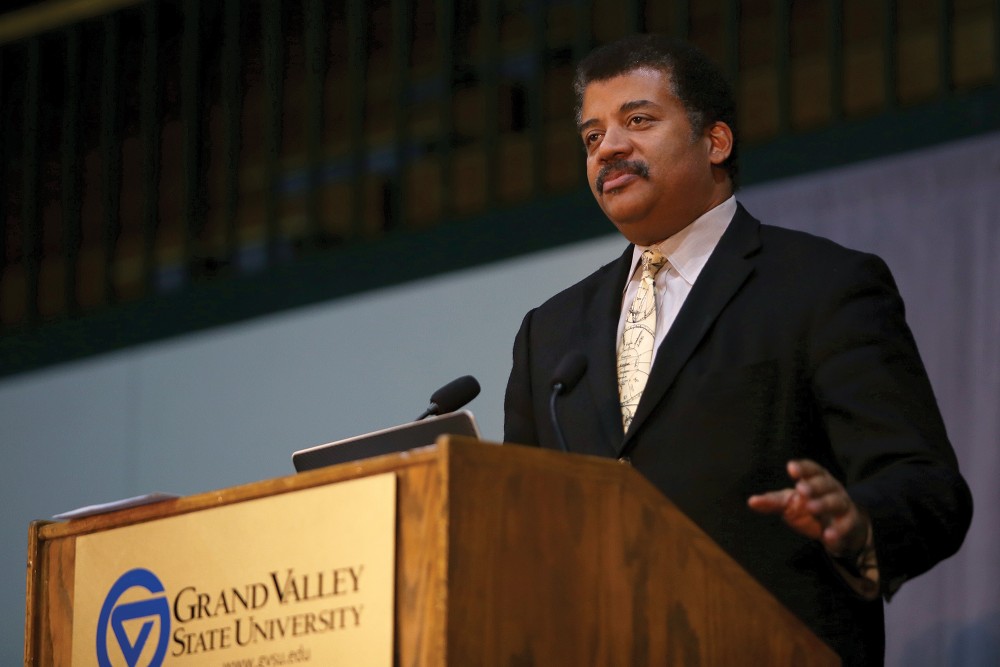Tyson sells out fieldhouse

GVL / Robert Mathews
Nov 17, 2013
Neil deGrasse Tyson, astrophysicist and space exploration expert, sold out Grand Valley State University’s Fieldhouse Arena on Wednesday night to an audience of more than 3,800 people who came to hear Tyson’s lecture on using the scientific process to approach small and large issues.
Tyson is the director of the Hayden Planetarium at the American Museum of Natural History in New York, the author of 10 space exploration books, and the host of radio show “StarTalk.” He is also currently remaking Carl Sagan’s TV show “Cosmos.”
Provost Gayle Davis introduced Tyson, saying that he was at GVSU to “spread the word to one and all about the value of thinking and science.”
Tyson urged the audience to question what they are told and to think critically.
“You should question stuff you want to be true as well as stuff you don’t want to be true,” he said.
To make his point, Tyson provided several examples of what he called “science illiteracy.” The first was UFO sightings. Many people see lights moving in the sky and automatically call them alien spacecrafts, and then they use human eyewitness accounts as evidence, which Tyson would not consider evidence.
“Eyewitness testimonies are the lowest scientific form possible,” he said. “We don’t even accept it. We need tangible evidence that didn’t go through our brains.”
The best form of evidence to prove alien abduction would be to “get yourself abducted, and grab something off the shelf,” he said. “Anything on their shelf is going to be interesting, and we can test it.”
Tyson said eyewitness testimonies are unreliable and expressed his dislike for their use in claiming proof of UFOs, as well as their use in the justice system.
“Are they human?” he asked. “Yes—which means they are susceptible to the same misinterpretation.
“Our susceptibility of the urge to believe in something is extraordinary.”
Tyson discussed the human urge to think things happen because of the moon and the tendency to believe that a bigger moon means that it is more special than the rest. One such moon he talked about was the supermoon, which occurs when a full moon is closest to Earth in its orbit, making it appear to be bigger.
“If you are science literate, you will ask how much bigger this moon is than the last biggest moon,” Tyson said. “A small moon is like a 7-inch pizza. An average size moon is 7.5 inches, a large moon is 8 inches and a super moon is 8.00001 inches.”
Tyson finished his lecture by reading a section of Carl Sagan’s book “Pale Blue Dot: A Vision of the Human Future in Space,” which points out that to the rest of the universe, the Earth is just a small blue dot.
The event was sponsored by student organizations Center for Inquiry, Physics Club and Spotlight Productions. The Office of Student Life, Office of Undergraduate Research and Scholarship, College of Liberal Arts and Sciences, Frederik Meijers Honors College and Center for Inquiry Michigan also provided support.

























